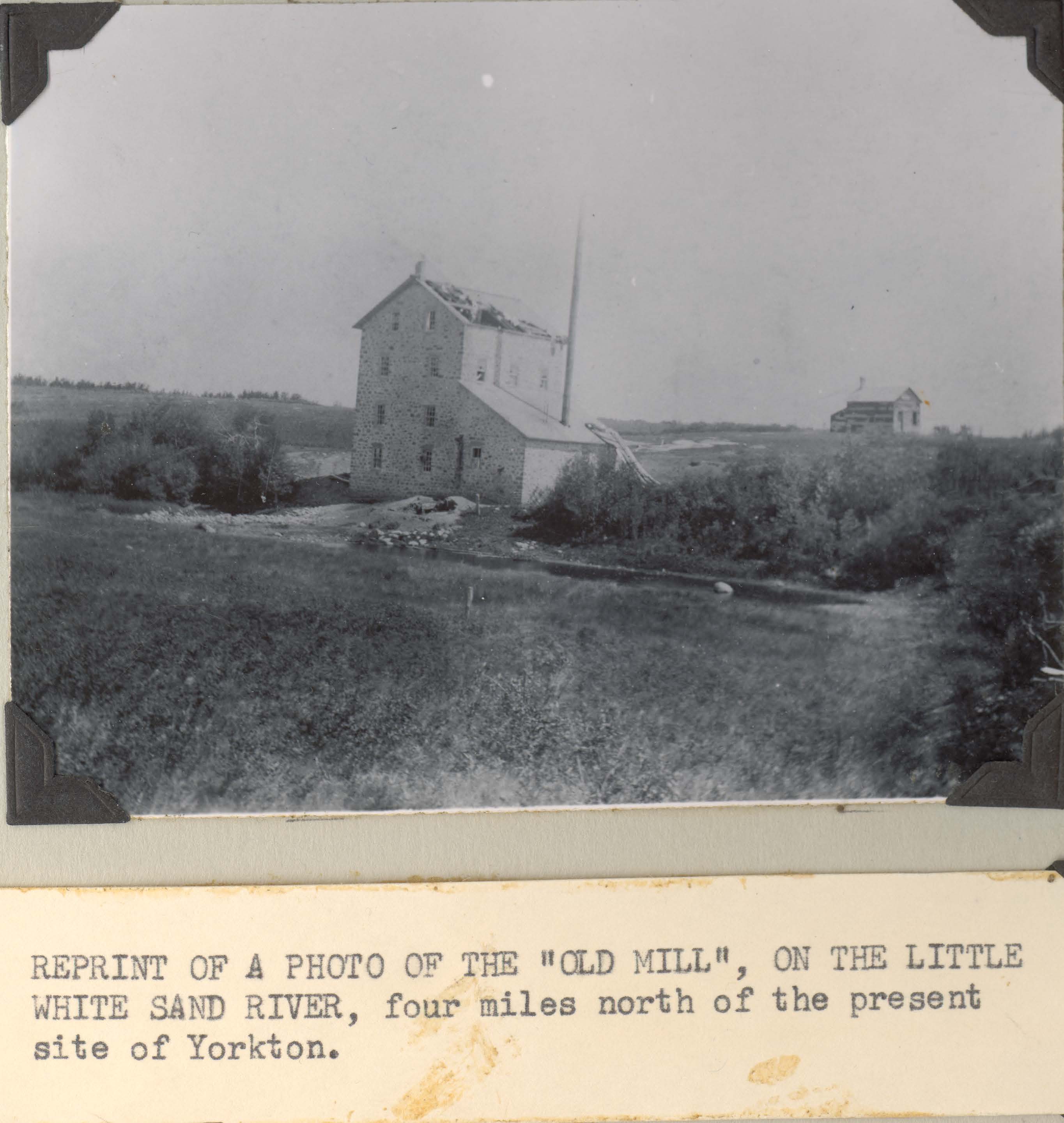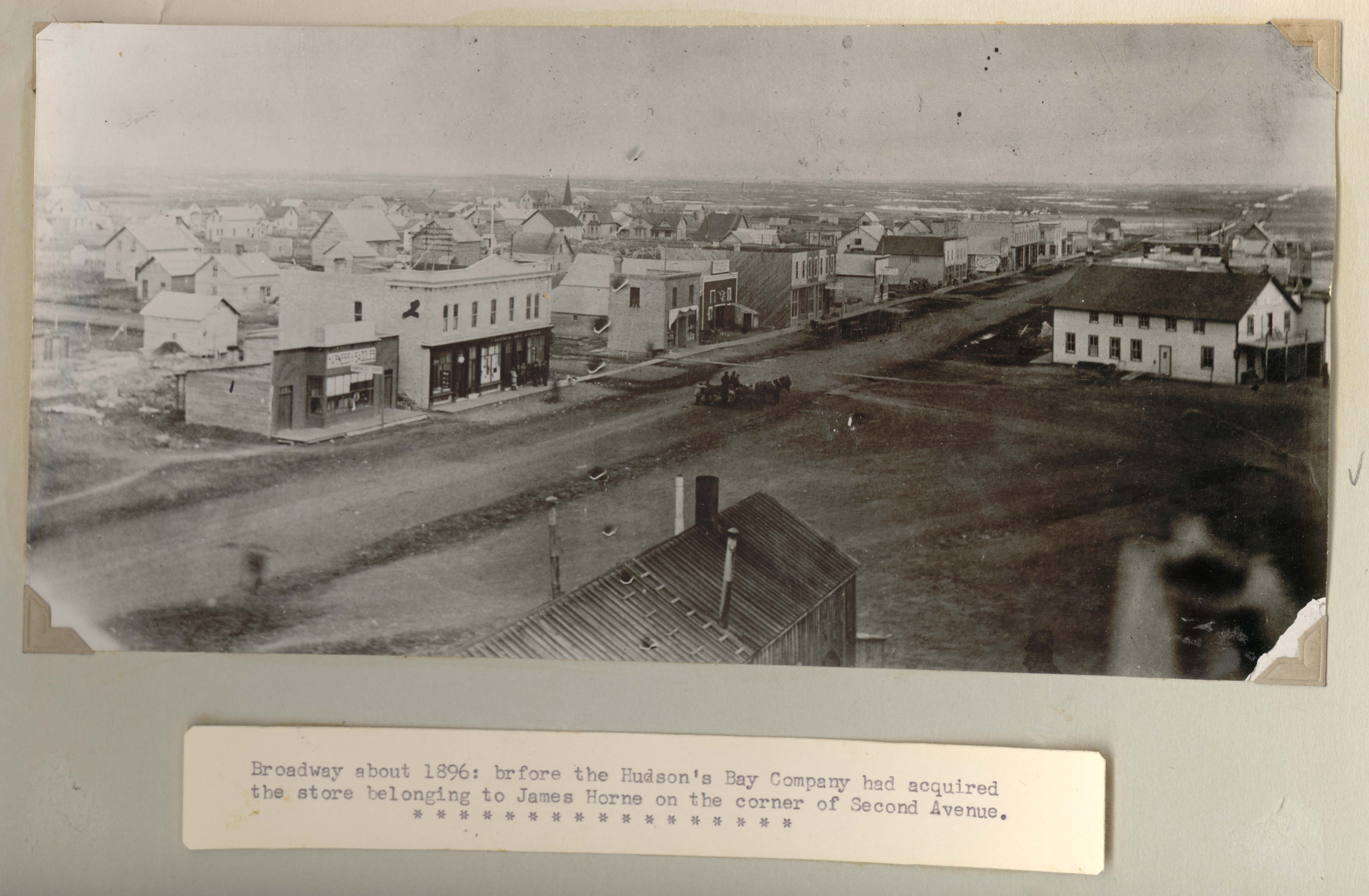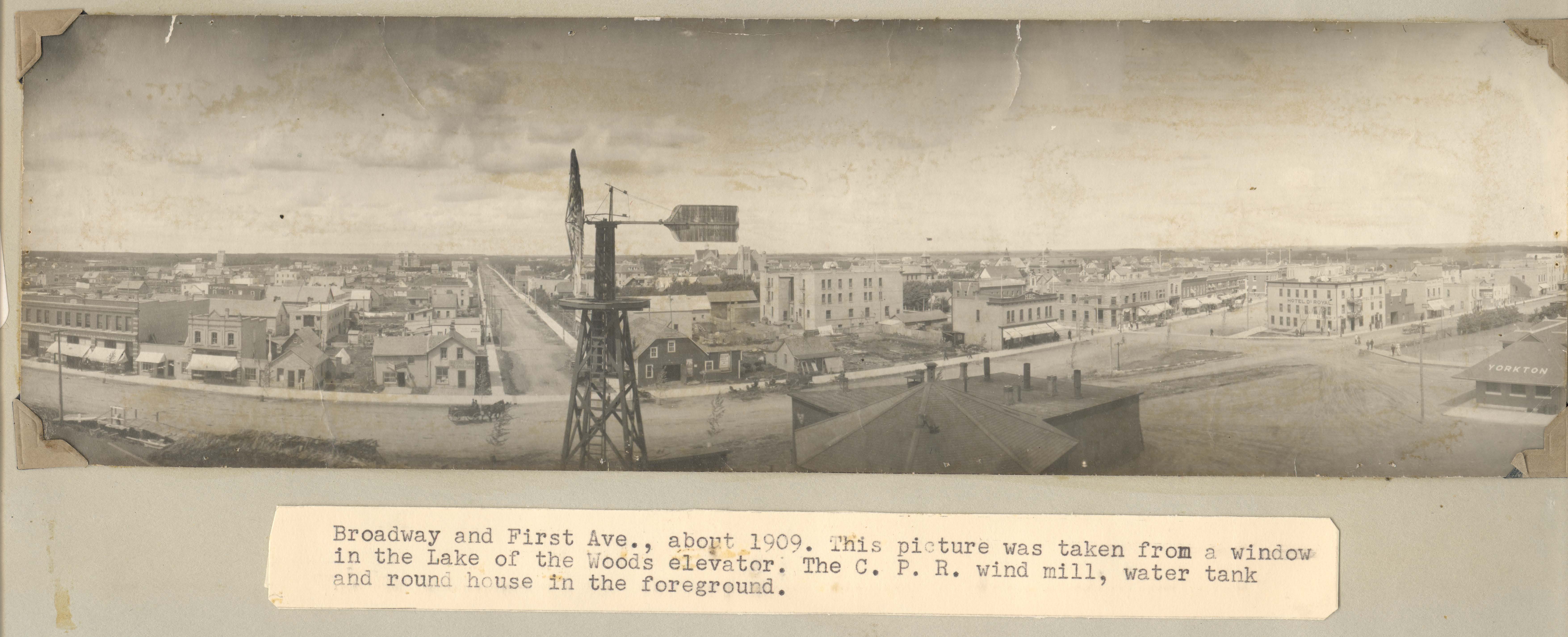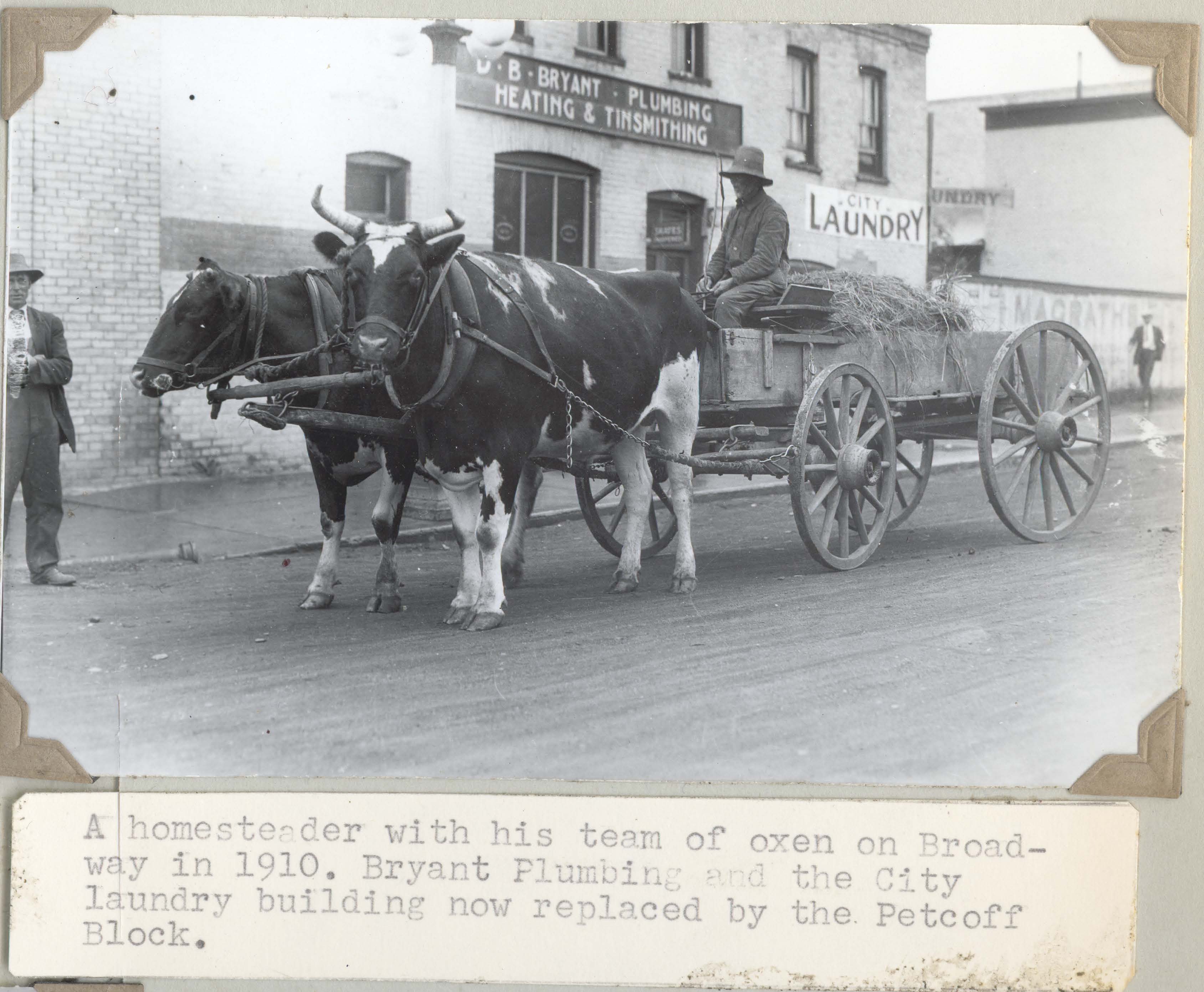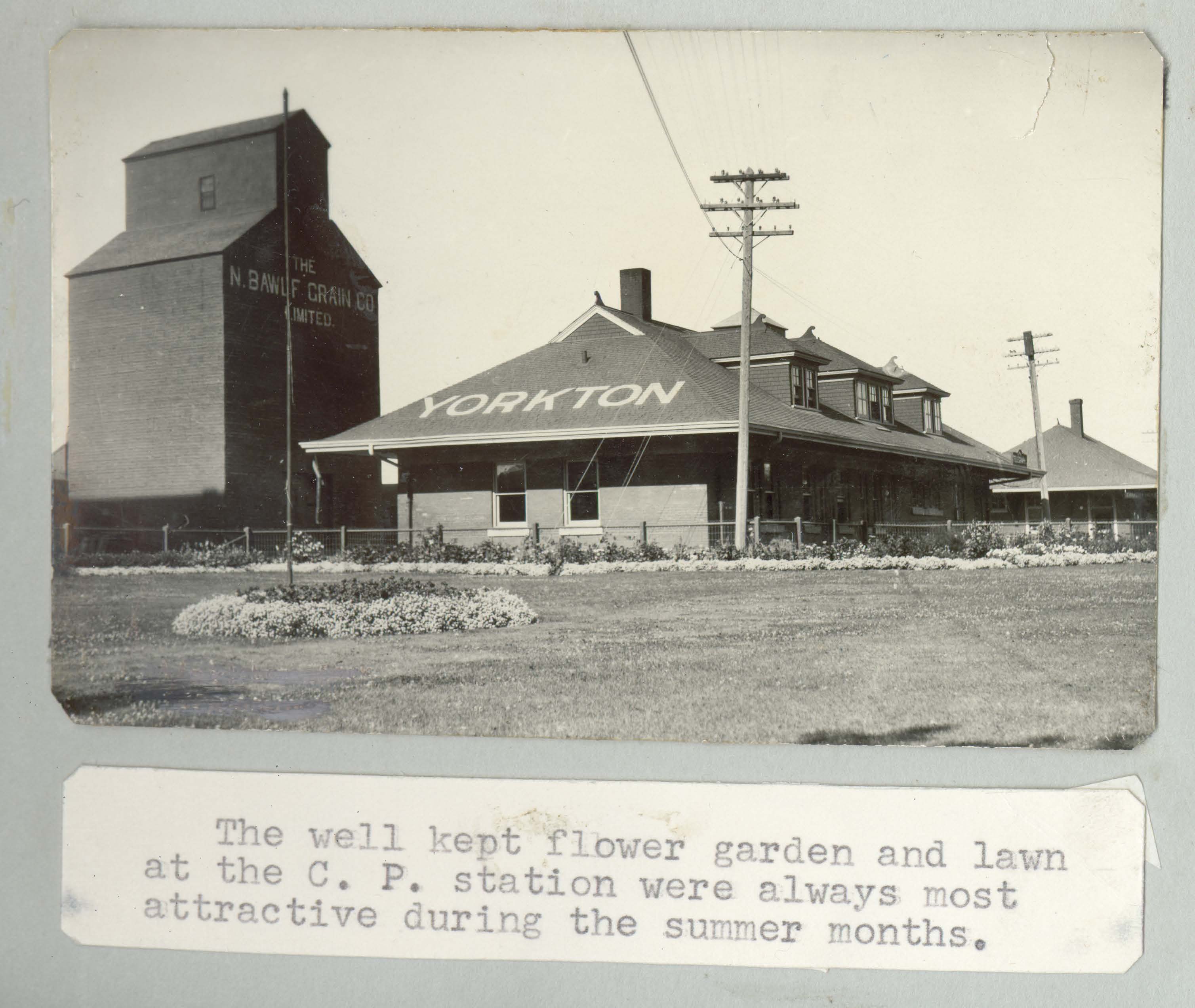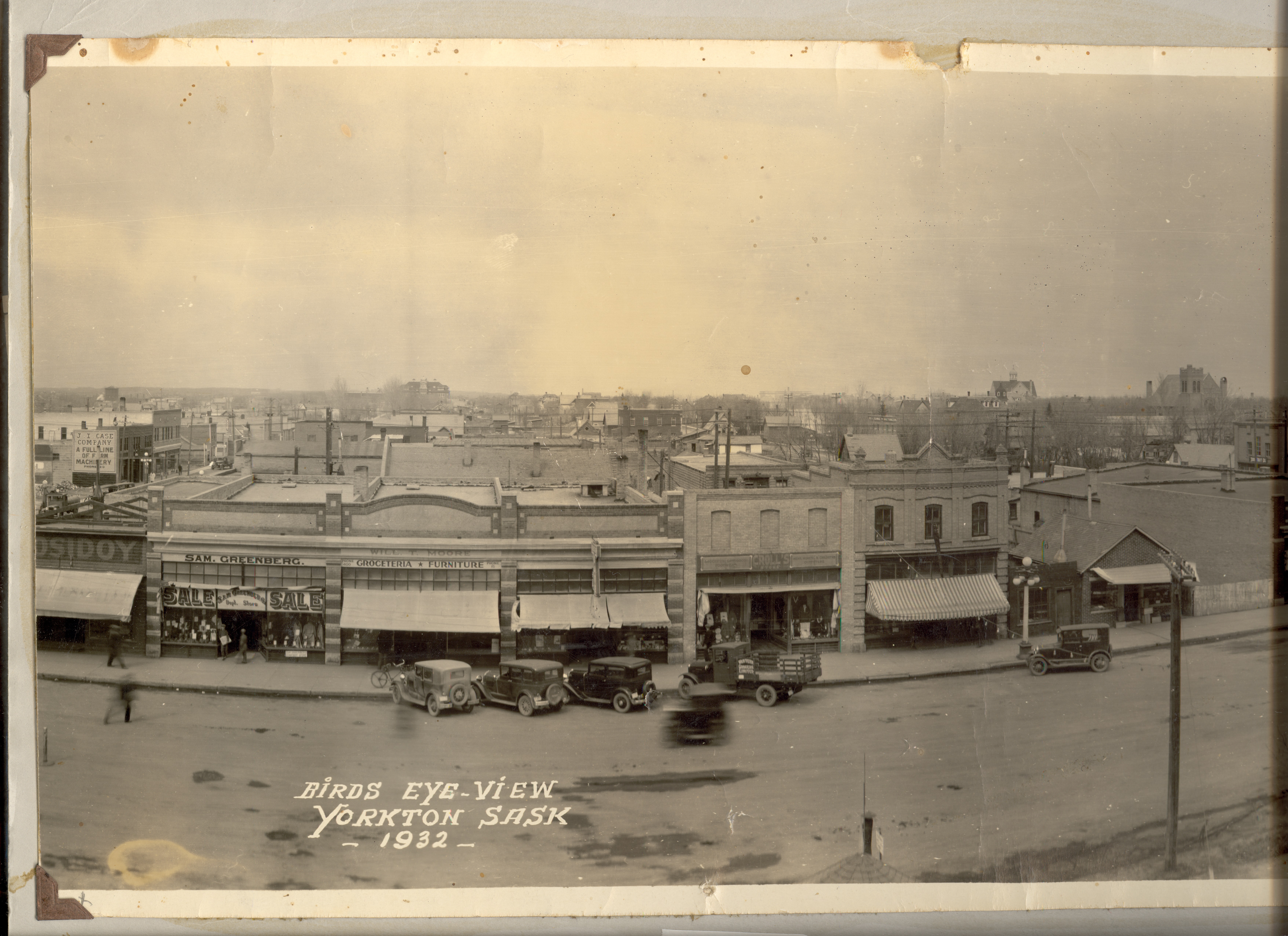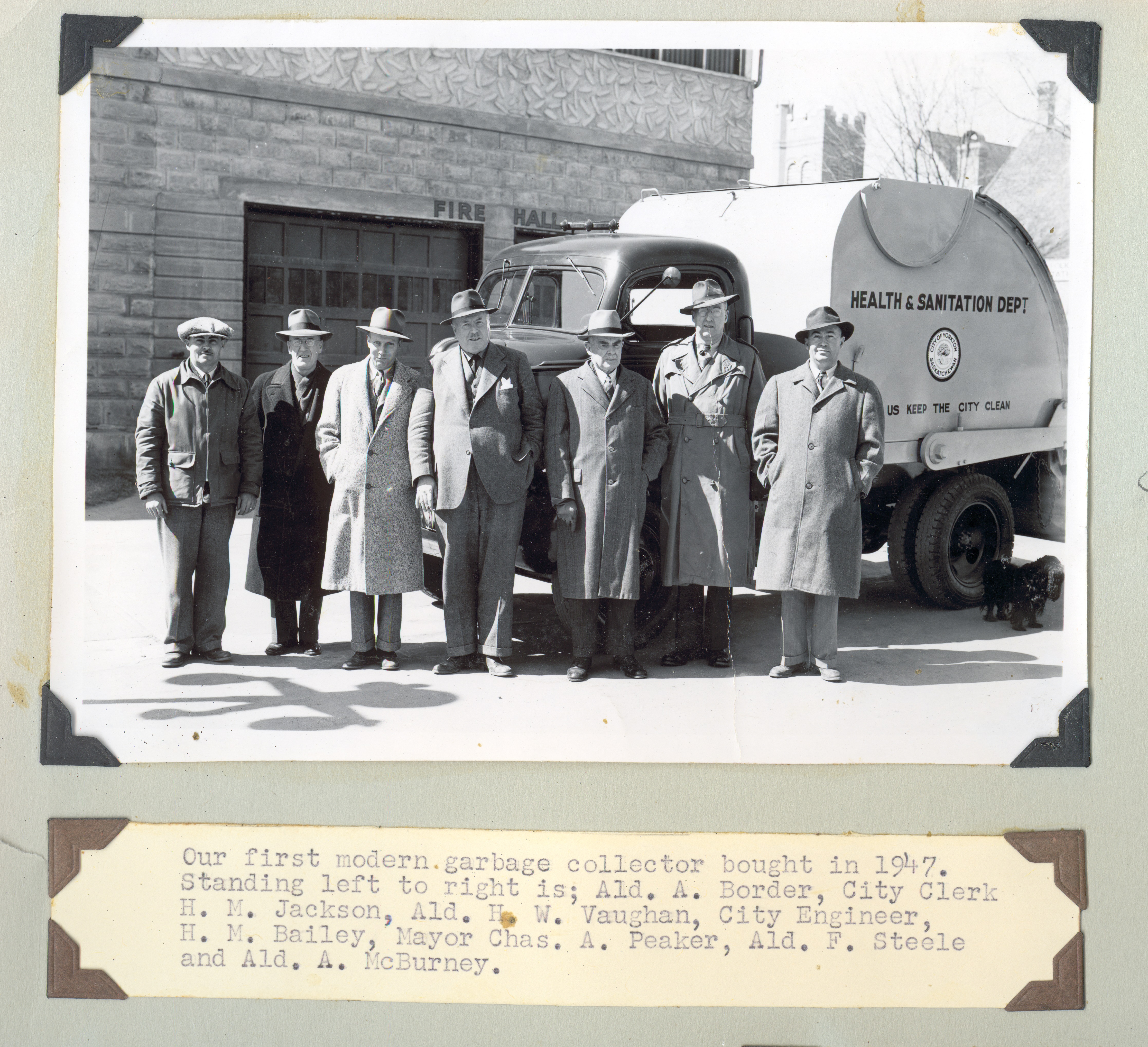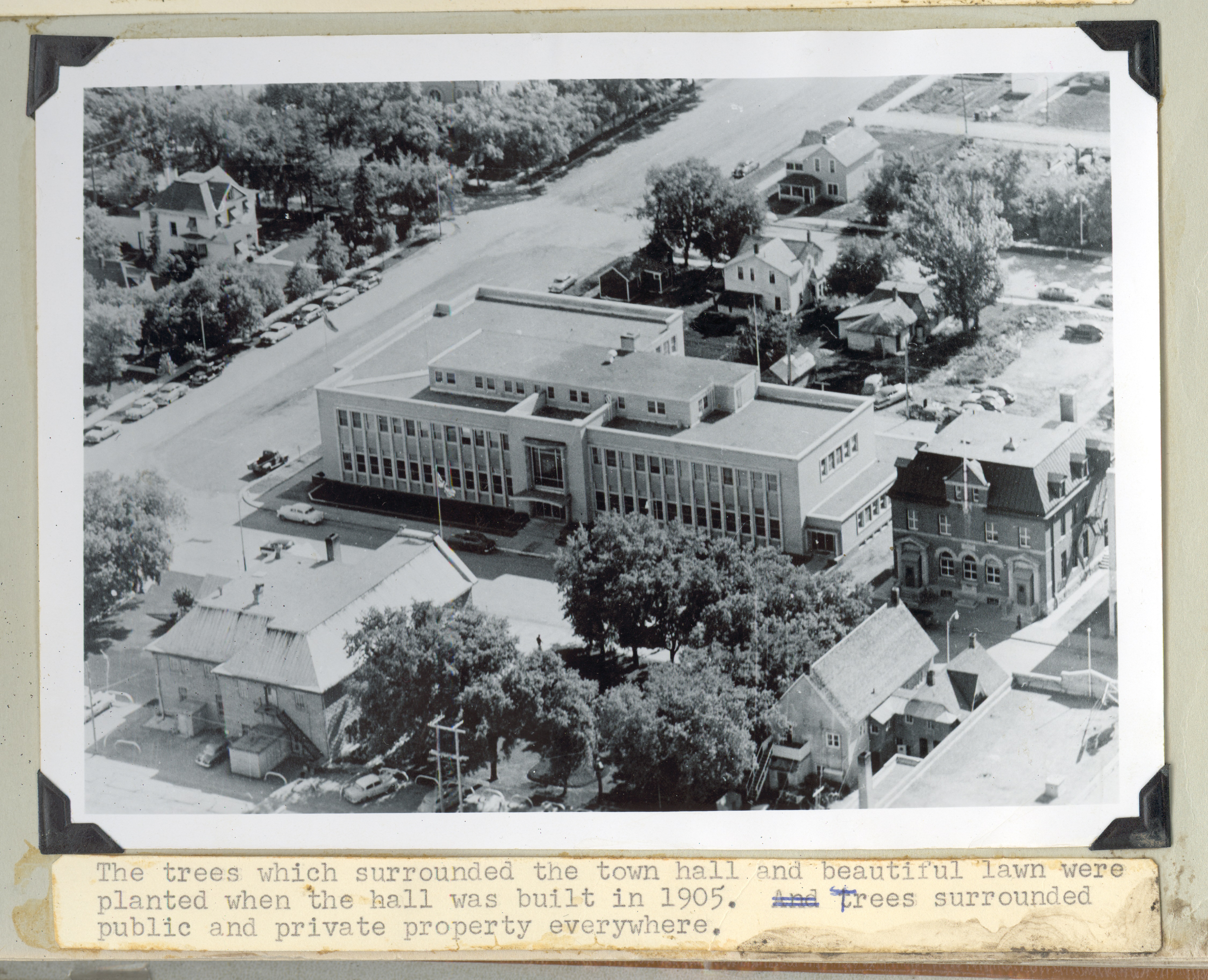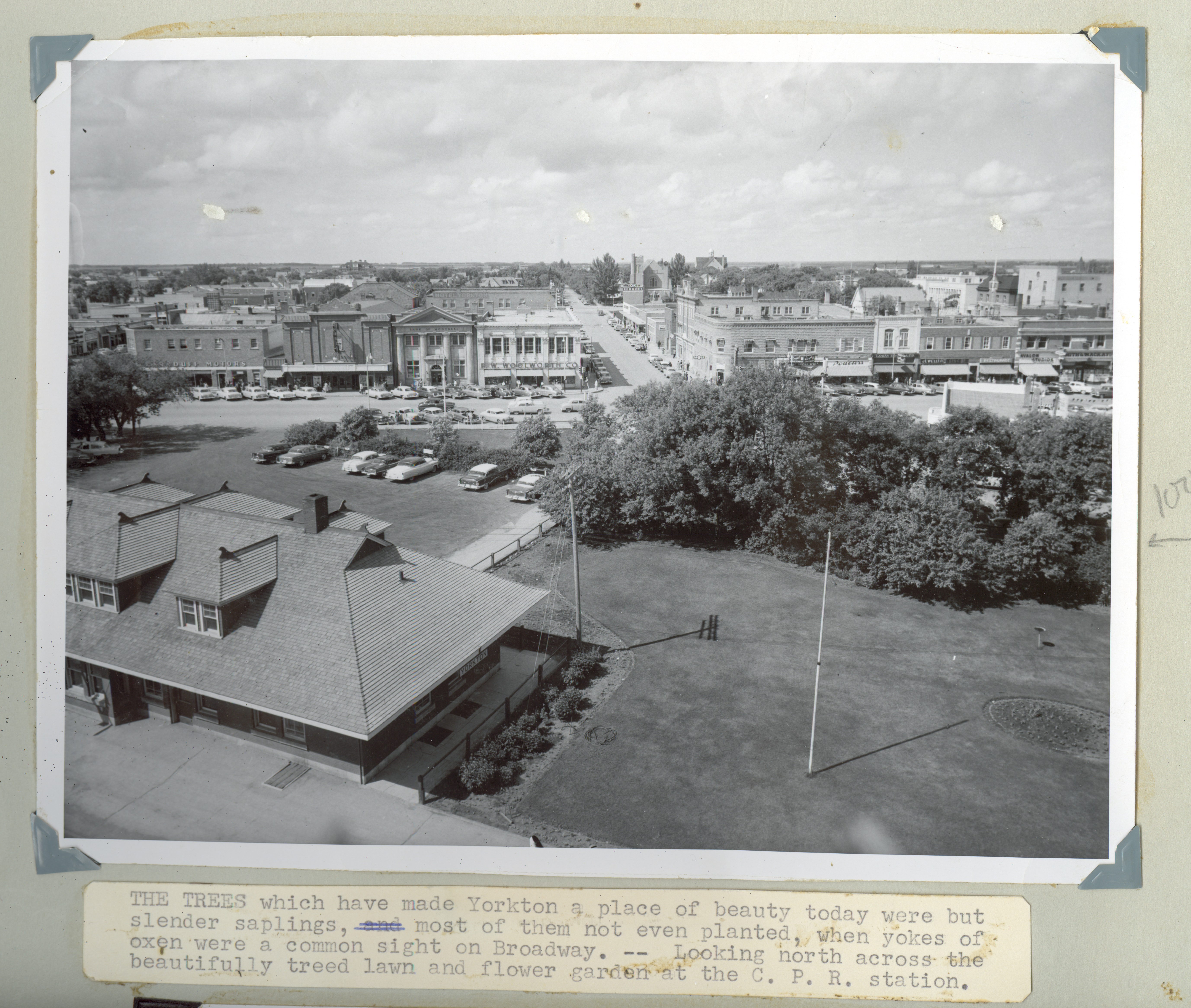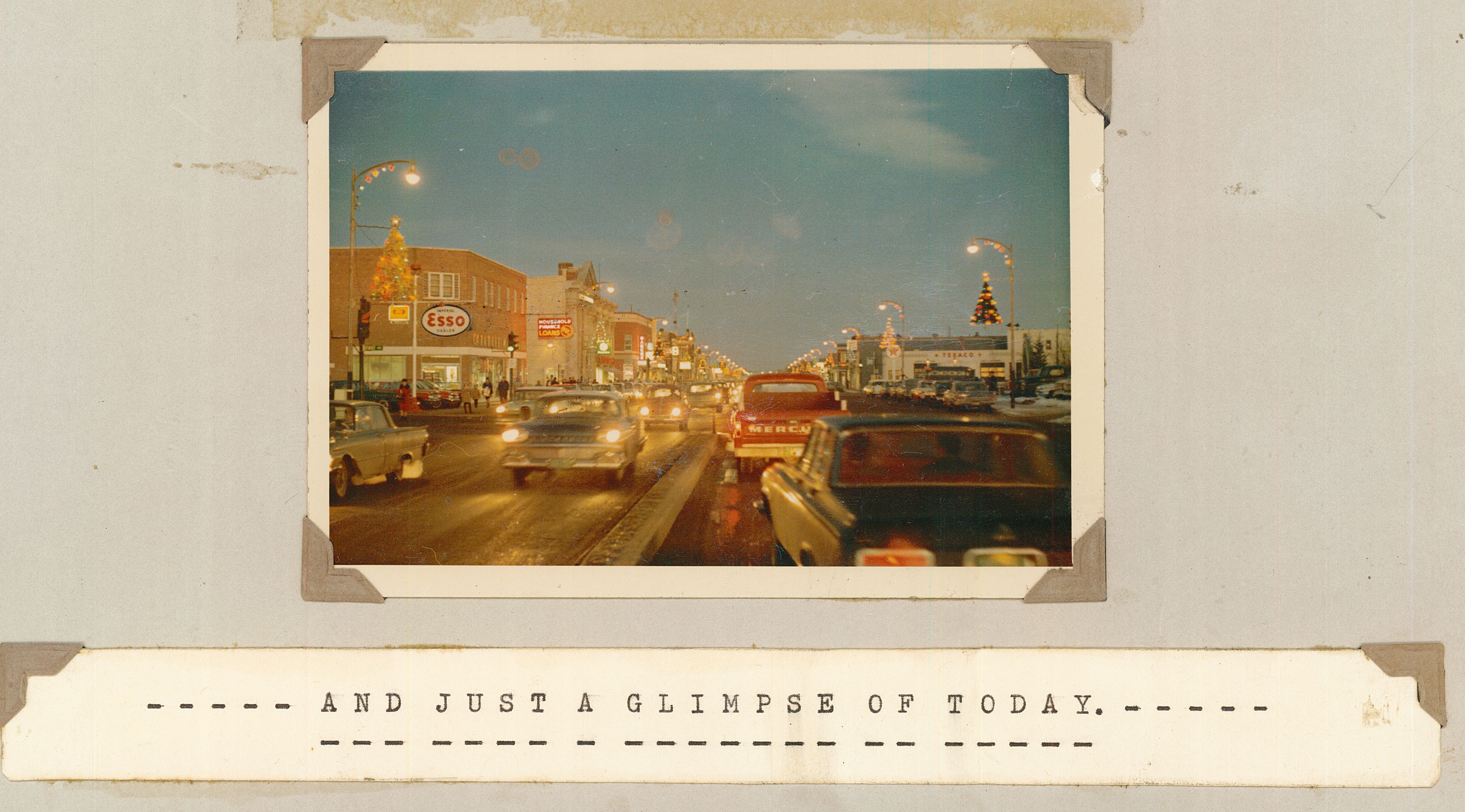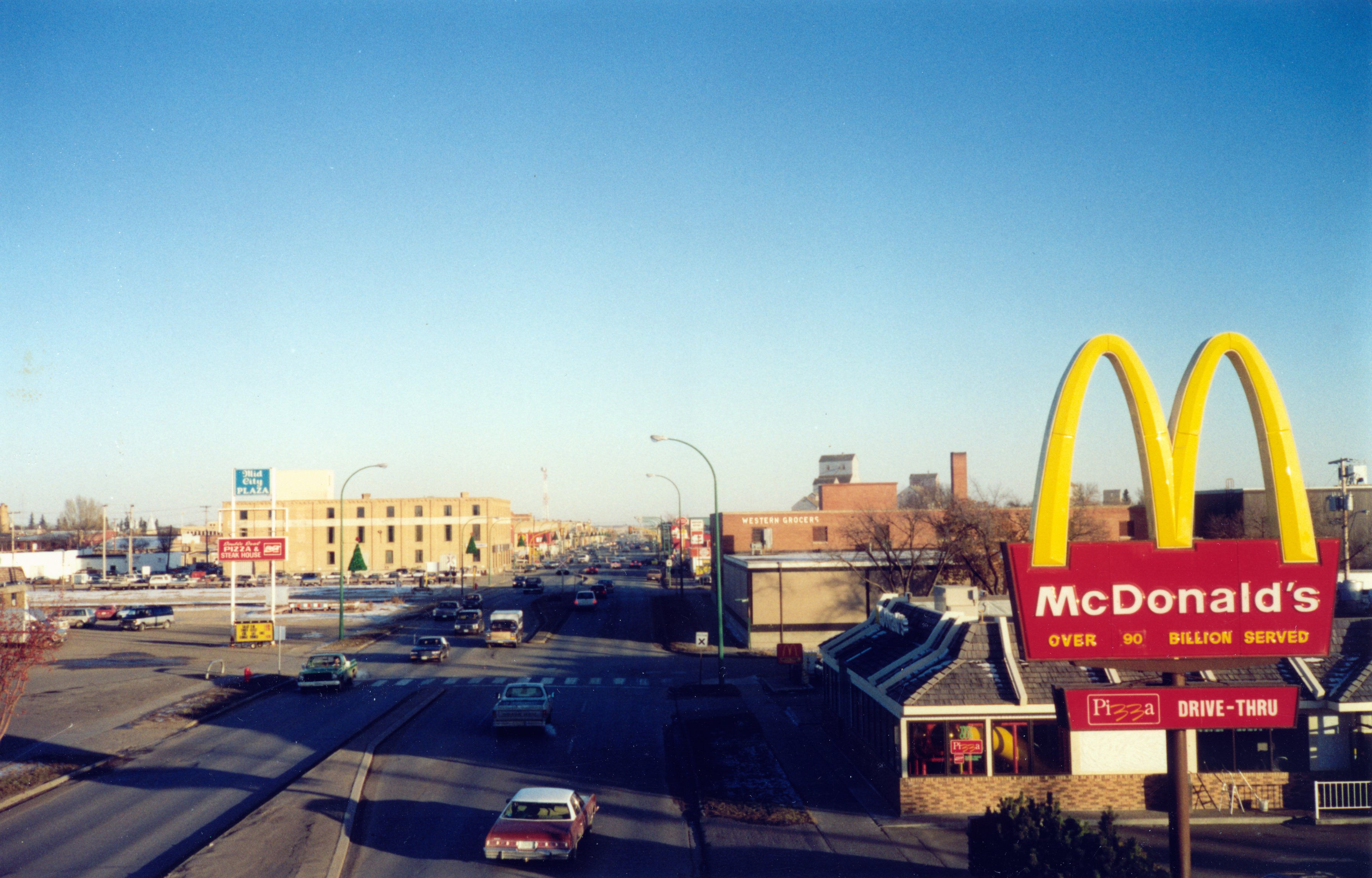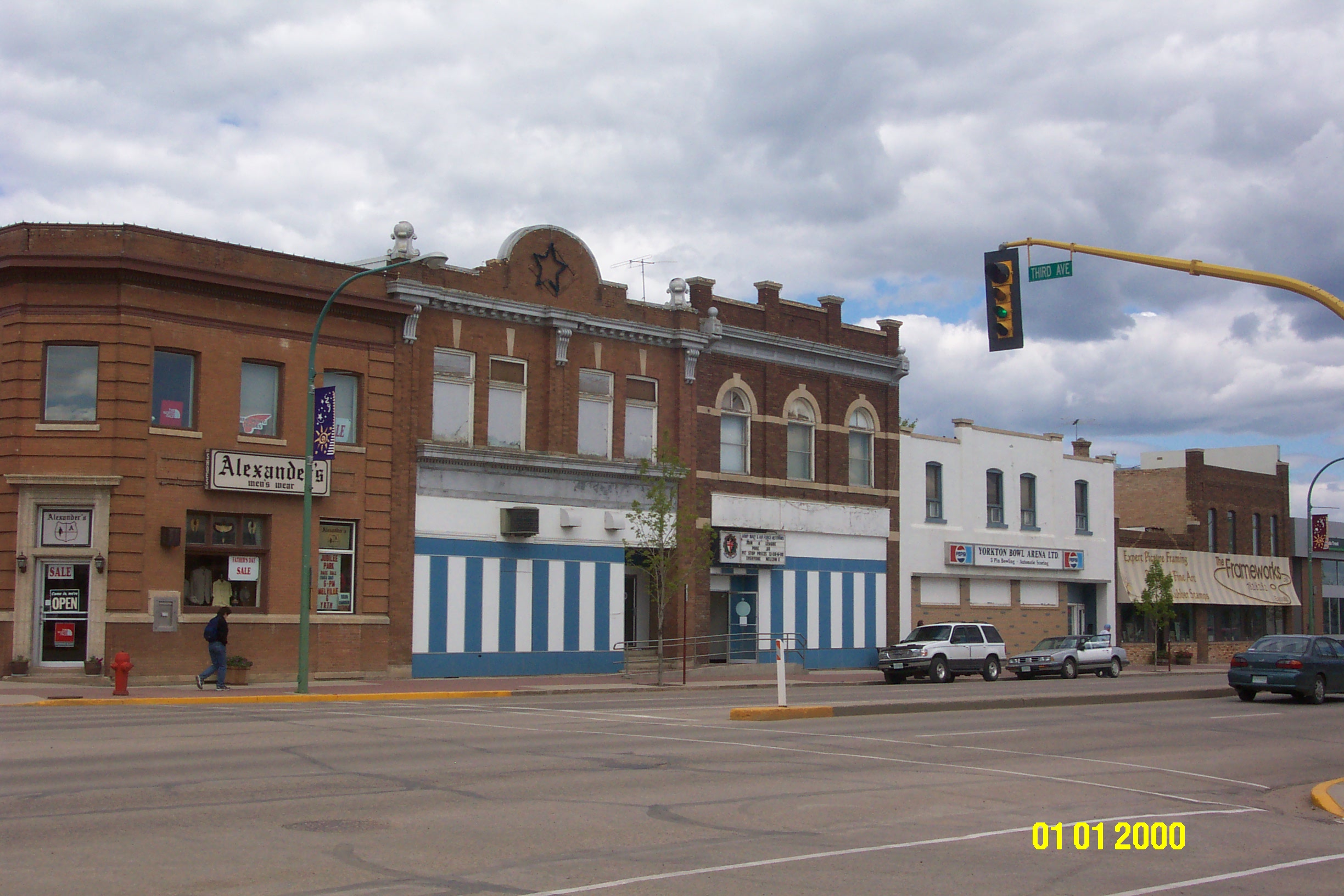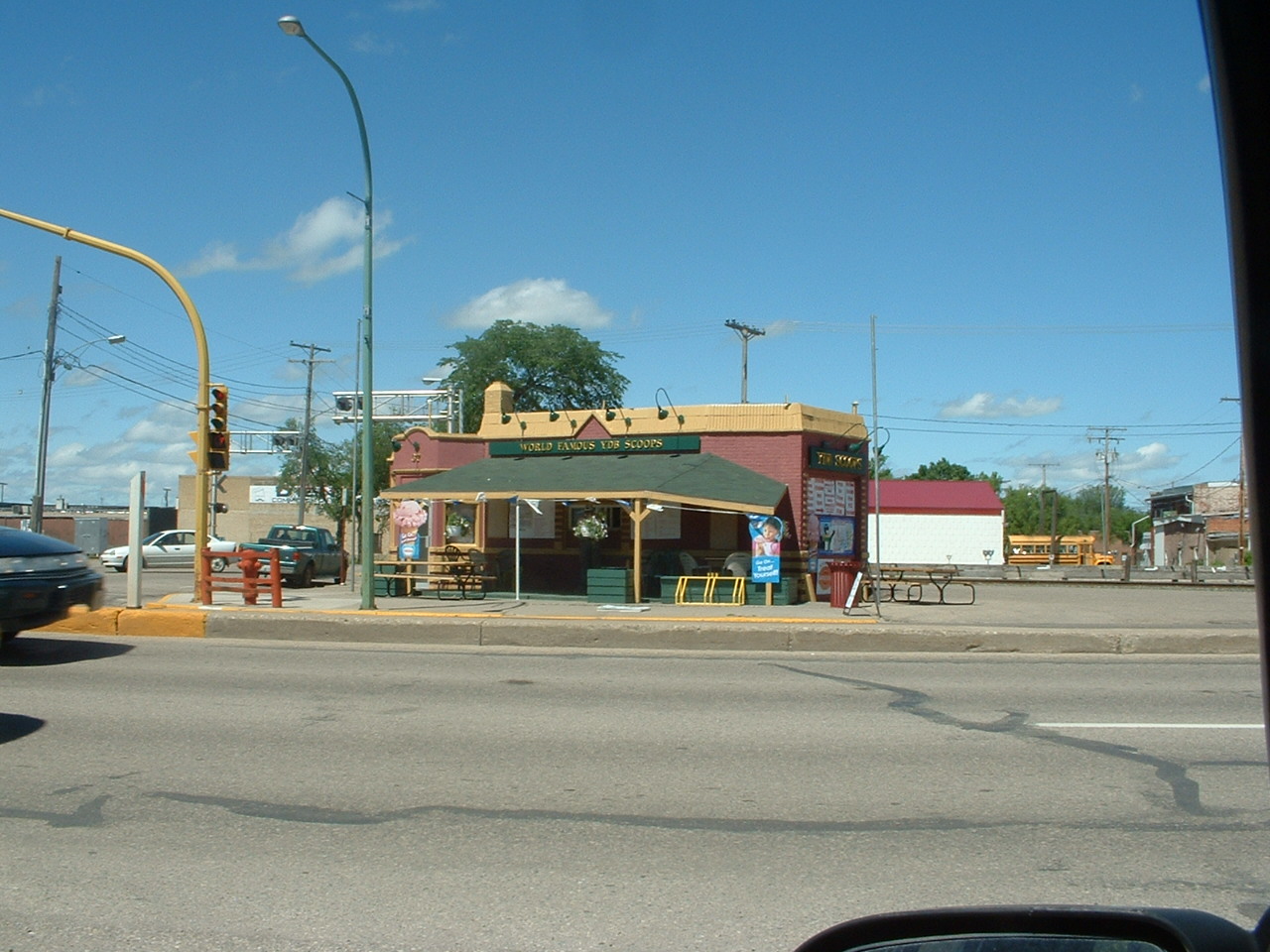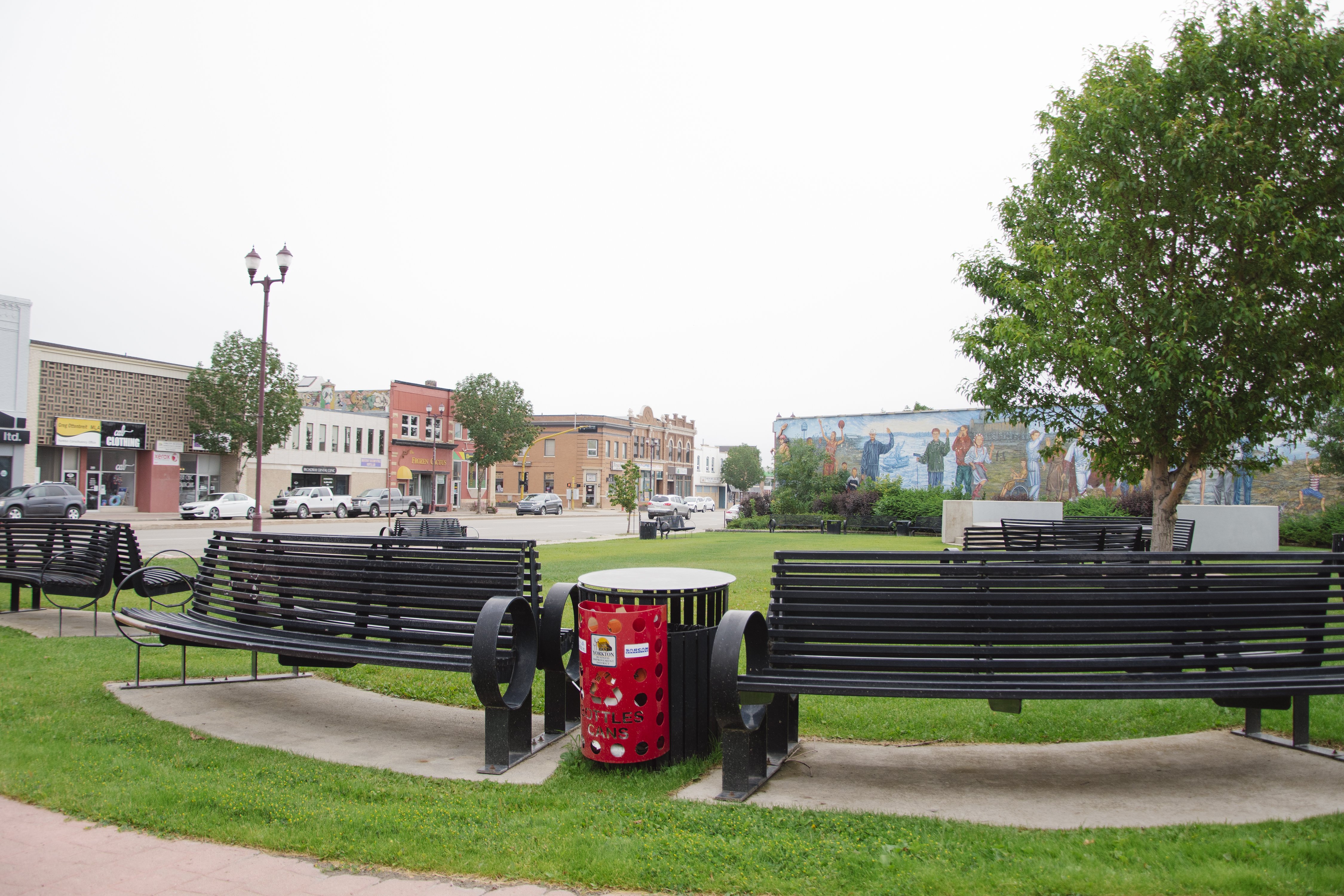Our Histories
Yorkton's Early Story
The Yorkton region has long been inhabited by Nêhiyawak (Plains Cree) and later, Nahkawininiwak (Saulteaux) populations. Both the Whitesand River and the Little Whitesand River/Yorkton Creek (tributaries of the Assiniboine River and located just to the north of present-day Yorkton) have shown archaeological evidence of encampment sites and hunting activity. The migratory way of life of these Indigenous groups meant there were no permanent settlements in the manner that one might envision today as “townsites”, but the terrain was an area of frequent visitation and longer-term habitation over millennia. Yorkton's locality within the semi-sheltered Aspen Parkland ecoregion would have provided an adequate blend of protection from the elements with the open spaces vital to nomadic hunting culture.
The advancement of European and eastern Canadian exploration and settlement greatly altered these migratory lifestyles, compelling some leaders of the region's First Nations groups to seek treaties with the Crown via the newly-formed Dominion (federal) government. With the signing of a treaty at Fort Qu'Appelle in 1874, the people and lands around the future Yorkton became part of Treaty 4 Territory. After this point, title to the land began to be sought in earnest by those hoping to conceive their own visions of community.
| Read more... |
|
In early 1882, a group of business men met in Toronto, Ontario, to discuss a plan to invest in the opening of lands for homesteading in Western Canada, specifically in the newly created Provisional District of Assiniboia, North West Territories. The Dominion Government had provided for the acquisition of free homestead quarter sections, as well as offering certain sections for sale to companies, who in turn could sell for profit, at the same time furthering the Government's dream of Western expansion. The York Farmers Colonization Company, with an Ontario Member of Parliament N. Clark Wallace as President and a capital shareholders' investment of $300,000.00 was incorporated May 12, 1882. Their charter allowed them not only to buy and sell certain lands, but to set up businesses, build roads, operate ferries, run stagecoaches, make loans, and generally take charge of the founding of a new colony. They also acted as agents of the Dominion Government for the assigning and filing of free homesteads. When four company officials, one being the Managing Director, James Armstrong came to view the area, they were impressed with the woodland scenery which resembled parts of Ontario, and with the rich quality of the soil. They obtained 8 townships and invited settlers from York County and other parts of southern Ontario, Quebec, the Maritimes, Manitoba, Great Britain and United States. Settlers began arriving in the summer of 1882, most of them heading east for the winter and to return the following spring. Four men stayed and wintered in one shack, existing on a minimum of supplies and with the help of Native people. They called their settlement "York Colony" and the hamlet, erected on the banks of the Little White Sand River "York City" situated 21/2 miles (4.6 kilometers) north of present day Yorkton. The name of the hamlet changed to "Yorkton" with the official opening of the post office on January 1, 1884. Compared to most other communities out West, it had an added boost simply because it had the backing of a wealthy colonizing company and its members who had business savvy and political clout. The company and the settlers transplanted from Eastern Canada the political, social, religious, educational, judicial and entrepreneurial systems. With the influence of the settlers from the British Isles, an English/ English-Canadian culture dominated in organizations, clubs, churches, and the business sector. Some of these settlers would make their mark beyond the colony—Joel Reaman, and Dr. T. Patrick for example, were both elected to the Council of the Territorial Government. By 1883, Rufus Stephenson, Inspector of Colonization Companies reported: "The total number of settlers is one hundred and fifty-eight." He goes on to explain: "Altogether the Colony is very prosperous." While this was a successful venture, Yorkton was not well positioned for growth. No village was, if it was not located on a rail line. After seven years, the railway had not extended beyond Saltcoats. There were also the usual hardships of farming, with some years of poor crops. Many took up cattle raising to increase their income. By 1888 the York Farmers' Colonization Company had met its requirements with the Dominion Government. It had founded a colony, and settled most of the homesteads and its lands in the acquired townships. The Company continued to have land holdings in the Yorkton area, until 1947 when it was dissolved. When the Manitoba & North Western Railway extended westward in 1890, Yorkton moved to its present location. Some buildings were moved from the old site, and construction of new ones began. Progress continued with the arrival in the late 1890s, of immigrants from many lands: Poland, Russia, Germany, Hungary, Sweden, and in greater majority Ukraine. The Dominion government erected an Immigration Hall, and hired interpreters to assist the newly arrived. Since most were experienced farmers, they took up homesteads still available in the outer reaches of the original York Colony lands: Rhein, Canora, Beaver Hills, Crooked Lakes, Otthon, Ebenezer, etc. In time, these settlers, in particular the Ukrainian people would build new institutions, and bring a wealth of cultural diversity to the city and the region. Another main factor in the community's prosperity was the emergence of a strong Board of Trade. Yorkton soon became known as an important distribution and trading centre. This community has never experienced a real "boom" but rather it has been characterized by a steady growth, making for a very stable economic base. For a couple decades at the beginning of the 20th century, Yorkton had the appearance of a western frontier town. An article written in 1922 by a former manager of the town's Union Bank gives us that impression. C. W. R. Pearson who had worked here from 1897 to 1917, describes Yorkton as follows: "Cattle ranching was the main business in the early days and our customers extended over a large territory. The cattle used to be driven from great distances to Yorkton to ship. Yards full of cattle and the town full of ranchers meant a busy time in the bank, as these men crowded in to cash their cheques." When Saskatchewan became a province in 1905, the population of Yorkton was 1,200. It was projected that by 2005, the population could reach about 20,000. The more dramatic growth of the last few years is due to the general urbanization of Saskatchewan, and the regionalization of government and corporate services. In the annals of our history, the work of the York Farmers' Colonization Company as colonizers of farming lands and village builders needs to be recognized as having set the direction for the prosperity of this community. |
History Timeline
Pre-Settlement
"Go West young man, and grow up with the country" was a common saying of colonizing agents and other propagandists, urging men of Eastern Canada to settle a large portion of a vast tract of land then known as the North West Territories. However, there were important events that occurred prior to settlement that set the stage for a peaceful and orderly colonization process.
|
These are outlined as follows: |
|
• Negotiations began in 1869 by the British Crown to obtain the lands held or claimed to be held and called "Rupert’s Land" by the Hudson’s Bay Company. In 1870 the Dominion Government of Canada, to whom the lands had been transferred from the British Crown obtained Rupert’s Land and the North West Territories paying the sum of 300,000 pounds sterling. The deal included allowing the Company to retain 1/20th of the fertile belt (that is the lands south of the North Saskatchewan River) and allowing it to continue in the trading business. • Manitoba became a Province in May of 1870. • An Act of Parliament respecting Currency was made in 1871: "To establish one uniform currency for the Dominion of Canada." The British currency system was discontinued and the dollar, silver coin and cent system was adopted. • In 1872, the HOMESTEAD ACT was passed by the Dominion Government, opening up lands of Western Canada for settlement. A homestead was 160 acres, or one quarter section. Those eligible to apply were: the sole head of a family, or any male over eighteen years of age. A woman could apply if she was the sole head of the family. The applicant had to appear in person at a Dominion Lands Office, or sub-agency for the district. It was also possible to make entry by proxy, depending on certain conditions. The homestead quarter was free. A charge of $10.00 was imposed as a registration fee. The homesteader was required to reside on the land for 6 months per year for a duration of 3 years. He was also required to cultivate 30 acres during that period. After three years, if all conditions were met, he could apply for title. If he was not born in Canada, or was not a British subject, the homesteader had to apply for naturalization. Thus, he would relinquish his citizenship to a foreign country, and acquire the rights and privileges of a British subject residing in Canada. The government also enabled the homesteader to purchase another quarter section, usually a neighbouring one under the pre-emption policy. • A "Township" consisted of 36 sections. The even numbered sections were for free homesteads and pre-emptions, except for section 8 and 26 set aside for the Hudson’s Bay Company, and section 11 and 29 in each township was reserved for future erection of schools. Early township maps also show odd numbered sections set aside for railway or public lands, or for possible sale to colonization companies. • The founding of a paramilitary force, the North West Mounted Police in 1873. The Force’s famous march west into the Cypress Hills, in what is now Saskatchewan, and in the Fort Macleod area of present day Alberta, was the beginning of the establishment of law and order in Western Canada. • In 1873, the Council of the North West Territories was founded, with headquarters in Winnipeg, Manitoba. • INDIGENOUS PEOPLE: Tribes who occupied this region over the centuries were Gros Ventres, Peigan, Blood, Blackfeet, Assiniboian, Nêhiyawak (Plains Cree) and, later, Nahkawininiwak (Saulteaux) populations. It was with the signing of Treaty #4 at Fort Qu'Appelle in 1874 that 75, 000 square miles of land was surrendered to the Dominion of Canada. The lands of the Yorkton region are part of this Treaty. • DOMINION LANDS SURVEY: The north eastern part of this region was surveyed in 1880. • PROVISIONAL DISTRICT OF ASSINIBOIA: One of four provisional districts established in 1882 to better govern the settlements of the North West Territories, and as a first step eventually leading to the creation of provinces. The boundaries of the District of Assiniboia were between 111 degrees, 4 minutes, and 112 degrees longitude, including the Milk River area beyond Medicine Hat. To the east, to the Manitoba boundary 101 degrees, 3 minutes. The top latitude was at 52 degrees, and south to the 49th parallel. Yorkton was located in the District of Assiniboia until the District was incorporated into the Province of Saskatchewan in 1905. |












